Anna von Hausswolff: 'Forget about space and time, it's eternal and mysterious' - interview | reviews, news & interviews
Anna von Hausswolff: 'Forget about space and time, it's eternal and mysterious' - interview
Anna von Hausswolff: 'Forget about space and time, it's eternal and mysterious' - interview
The Swedish singer-songwriter on her new album 'Dead Magic'
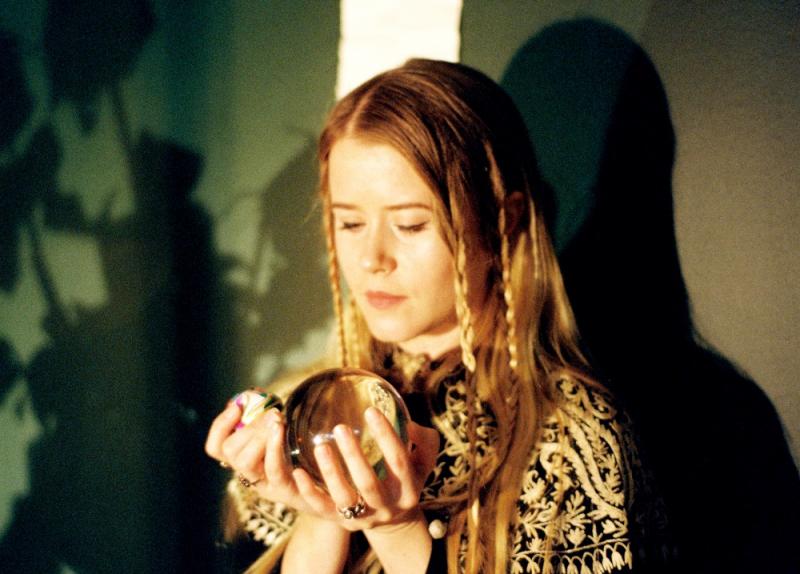
Considering the coal-dark nature of her music, it was unsurprising Sweden's Anna von Hausswolff was dressed entirely in black while meeting up at London’s Rough Trade East shop to talk about her new album Dead Magic. Less foreseeable was her sunny disposition and willingness to veer off topic.
Dead Magic (pictured below) is the Gothenburg-born singer-songwriter’s – full name Anna Michaela Ebba Electra von Hausswolff – least direct studio album to date. It is also her highest-profile release. She is clearly making an impact: Iggy Pop is currently on TV in an ad for the BBC radio station 6 Music in which he says she is one of his favourites.
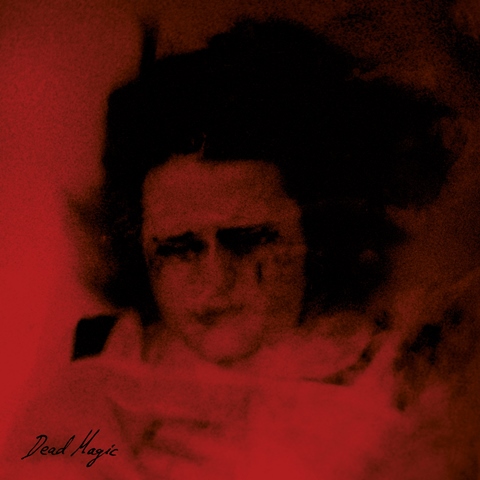 When von Hausswolff’s albums are looked at, the progression towards where she is now becomes clear. Her debut Singing from the Grave (2010) included nine linear compositions with piano as her main instrument. Musically, it suggested a goth take on Goodbye and Hello Tim Buckley. Next, the 13-track Ceremony (2012) marked her apart as it encompassed a unique musical worldview where the dominant features were pipe organ, a full-bore, malleable and mostly upper register but multi-octave voice, and surging songs with the rhythmic dynamics of sludge metal. She had begun convincingly evoking the spirits seemingly inhabiting her music.
When von Hausswolff’s albums are looked at, the progression towards where she is now becomes clear. Her debut Singing from the Grave (2010) included nine linear compositions with piano as her main instrument. Musically, it suggested a goth take on Goodbye and Hello Tim Buckley. Next, the 13-track Ceremony (2012) marked her apart as it encompassed a unique musical worldview where the dominant features were pipe organ, a full-bore, malleable and mostly upper register but multi-octave voice, and surging songs with the rhythmic dynamics of sludge metal. She had begun convincingly evoking the spirits seemingly inhabiting her music.
The limited-edition 2014 live album Källan (Prototype) came next and featured a 40-minute organ piece. The Miraculous (2015), Dead Magic’s predecessor album, distilled the essence of the “Källan” recording and placed it in a band setting over ten songs (including a cover of “Come Wander with Me”, originally heard in an episode of The Twilight Zone). It was even spookier than what had come before and appeared to be a song cycle tracking discovery, deliverance, evocation and abdication. “Källan” was then returned to with “Källan (Betatype)”, a 21-minute reduction of the composition issued on 12'' in 2016.
While cut from a similar cloth to The Miraculous, the startling Dead Magic replaces standard song structures with portmanteau arrangements which, while still melodic, exercise rhythmic and harmonic shifts without becoming disjointed. Her voice is more flexible, more powerful than ever.
Previously, her collaborators have been fellow Swedes. For Dead Magic, von Hausswolff has brought in America’s Randall Dunn, best known for his work with Earth and Sunn O))). He has also produced Wolves in the Throne Room, on whose last album she contributed vocals. As the interview reveals, working with Dunn meant adopting fresh approaches. The new album’s string arrangements are by Iceland’s Úlfur Hansson, a long-term collaborator of Sigur Rós’s Jónsi.
Less immediately, her father, the multi-disciplinary artist Carl Michael von Hausswolff, may have been at the back of her mind while creating some of her music. He has worked with Electronic Voice Phenomenon (EVP) recordings, where the apparent voices of spirits have been taped from the ether. A fascination certainly feeding her creativity is the prose of the allusive Swedish writer Walter Ljungquist. Which is where the interview begins.
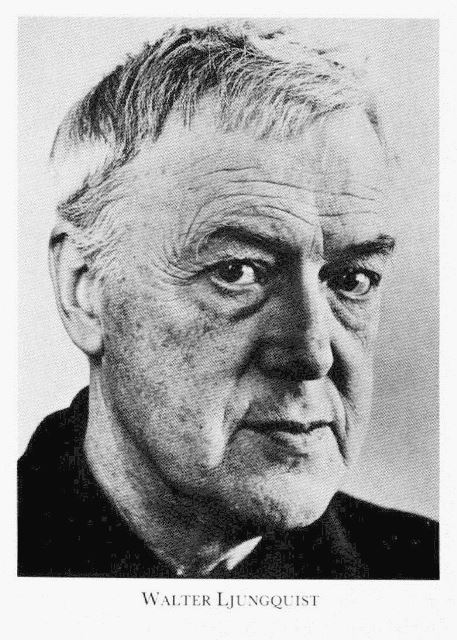 KIERON TYLER: Tell me about Walter Ljungquist (pictured left), the writer of Källan [which translates as “source”]. Dead Magic ends with “Källans återuppståndelse” [resurrection of the source]. You recorded “Källan (Prototype)” live at Lincoln Cathedral and then “Källan (Betatype)”, and I think Ljungquist was an inspiration for your last studio album The Miraculous. What is your interest?
KIERON TYLER: Tell me about Walter Ljungquist (pictured left), the writer of Källan [which translates as “source”]. Dead Magic ends with “Källans återuppståndelse” [resurrection of the source]. You recorded “Källan (Prototype)” live at Lincoln Cathedral and then “Källan (Betatype)”, and I think Ljungquist was an inspiration for your last studio album The Miraculous. What is your interest?
ANNA VON HAUSSWOLFF: “Källan” is an on-going piece with a version on Dead Magic. It’s an ever-changing song that I hope will stick with me for the rest of life. It’s a song that I find a lot of comfort in, there’s something in the harmonies and the melody that I can’t get tired of. It was inspired by this book called Källan by Walter Ljungquist. He’s an author that is not widely known, not even in Sweden. He was introduced to me to by a Swedish journalist called Magnus Haglund. He knew that Walter Ljungquist and my mum and dad come from the same area in Sweden. It’s an area I’m familiar with. My grandmother and grandfather lived there, and my aunt lives there now. It is in Österland. Magnus said if you read Walter Ljungquist you will be transported to this place and that’s exactly what has happened. I’m transported to the nature and the atmosphere there.
Is part of the fascination that you’re transported back in time, to your childhood or your family background?
Yes, it’s personal. I feel like I have a personal connection to Walter Ljungquist. He has his alter-ego which he writes about in Källan, this character. His name is Jerk Dandelin [Erik Dandelion].
The character is searching for something apart from modern, day-to-day life. Do you see yourself in this character?
I can recognise myself in his shoes. He’s a child becoming an adult on that border where reality is clashing with the imagination, where there’s a little bit of a struggle. How you integrate with your surroundings, in people and nature and how they blend in to each other. I can relate to that struggle.
I am interested in spirituality and the origins of spiritualityThe quote you’ve used to promote Dead Magic is from Ljungquist: “Our time is a time deprived of silence and secrets; in their absence no legends can grow.” Is using this political or a criticism of today where it's Twitter, the Internet, Facebook, revealing everything about yourself, constant noise?
This is absolutely correct but you can also see it as a poem connected with theme of the album. What’s happening right now is that the transparency of things is everywhere. Everything has to be explained, everything has to be open, everything has to be very precise, all the explanations, all the information is out there. When it comes to politics transparency is very good. But when it comes to art, it’s very important that you don’t necessarily give out all the information but give out some tools so the perceiver can create his or her own idea of what it is. You encourage people to use their own creativity or imagination to create a more personal bond with the art.
Is it sad that people are spoon-fed and don’t have to think?
Yes, it turns people into zombies and makes people lazy. It’s good that you don’t get all of the explanations and that you don't really know what’s being presented to you. Thinking about it for yourself. Of course, people are clever and when you explain things it feels that it makes things dumb.
Counter to the spirit of that, let’s ask about Dead Magic’s opening track “The Truth, The Glow, The Fall”. With “Gian”, in the lyrics, is this what the mystical writer Madame Blavatsky has written about, the mythical female figure in the early history of the world who with the aid of a shield is immune to magic, immune to bad stuff?
I know very well who Madame Blavatsky is and you can draw parallels to her work but it’s not that. Why did I answer that? [laughs] I like to keep my lyrics open to question! Sometimes if I blend in a name it gives me a tool to go into another interpretation, a guiding point.
 With “The Truth, The Glow, The Fall” – however I had thought of it – and the self-referencing “The Mysterious Vanishing of Electra”, there seems to be something female in the album. Is there a female identity to Dead Magic?
With “The Truth, The Glow, The Fall” – however I had thought of it – and the self-referencing “The Mysterious Vanishing of Electra”, there seems to be something female in the album. Is there a female identity to Dead Magic?
I think so. With my previous two albums it felt gender free, more about people, persons, not sexual identity. With Dead Magic I am using "her", "me" and "I" more. It’s an unconscious way of becoming more comfortable with blending my own identity into the works and the lyrics.
You’re interested in the pre-Christian, not necessarily the pagan…
Shamanism.
Is this right, that you’re interested in these things?
I am interested in spirituality and the origins of spirituality. And if we are to speak about some kind of religious or spiritual exercise, shamanism is probably the closest I can come to, where it feels that there is a pure idea of God – if the word God is used.
Mentioning shamanism, do you have any Sámi in you?
No. In 2010 I met a group of Sámi people in Abisko in northern Sweden and we did music for six days and that was the first time I really got in contact with the Sámi world, Sámi culture. And they taught me about their deep, fundamental understanding of how the world works and how nature relates to people and spirits. I was taught a lot. That band was called Adjágas.
Yma Sumac is the vocalist I’ve been listening to most. The 'Miracles' album, the rock one, is the greatest album of all time
A lot of your music paints pictures of landscapes and lyrically there are connections with landscapes, too.
One thing Adjágas told me about was the joik [the Sámi vocal style] and where it comes from, and how it corresponds to the environment. I loved that the sound represents certain things: a fox has a certain joik, a river has its own joik, a certain stone has its own joik. Without using words or animal-like sounds they represented things and that was extremely inspiring.
Has joik influenced your singing? Your voice has become very wild. Dead Magic’s “The Mysterious Vanishing of Electra” has some very wild singing.
They [the Sámi] have their own technique but the fluidity of singing and how you rhythmically approach things and make larger jumps between notes has been influential and inspiring. But it’s also been exotica, where they are a lot of fantastic singers. Yma Sumac is the vocalist I’ve been listening to most. The Miracles album, the rock one. It’s so funny where she brought her style of singing into a new genre, a more psychedelic rock album. Not a clash, it feel quite natural. Fantastic, the guitars are amazing on that album. The greatest album of all time.
You’ve covered Nico live.
Nico is one of my childhood idols. There were a bunch of strong, inspiring women that were my best source of inspiration and role models. Nico is special as she feels more introverted and more mysterious than the other female singers I was listening to in high school, her works are very timeless, how she takes time to develop chords. She’s not only a good vocalist but the compositions are complex and unexpected, authentic and pure. You can’t really categorise her. Patti Smith feels easier to pigeonhole. Diamanda Galas is totally unique. Siouxsie and the Banshees I listened to a little bit.
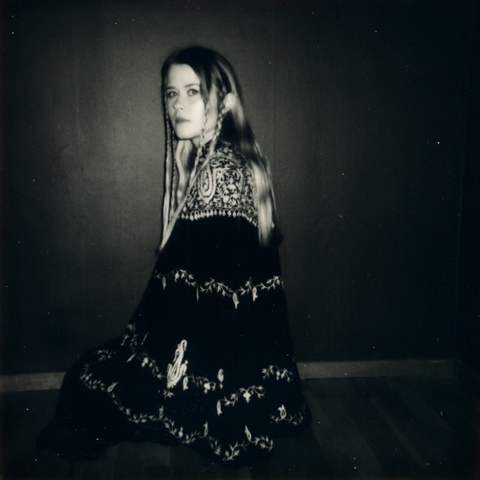 On Dead Magic, there is a credit for granular synthesis sound design. What on earth is that?
On Dead Magic, there is a credit for granular synthesis sound design. What on earth is that?
[Laughs uproariously] Um, I asked Randall Dunn what he wanted me to put on the sleeve. He sent me back the credits. I can guess what it is, he had this weird programme on an iPad. It might be the name of that.
Unlike your previous albums this seems to have been conceived of and recorded in stages. Is that difficult? Did you have in mind what the finished album would sound like?
I had all the structures ready and had an initial idea to make a live recording. When I sent Randall the demos he said there’s a lot of information, we are going to have to chop this up and record in different sections. He said, “You’re going to have to sit down and write the tempo for each part and then I have a better overview of what is going on, and of each instrument that is playing.” That broke my vision. We had five days with the band first in the studio. Then we had two days in Copenhagen with the pipe organ [at Marmorkirken]. The band sessions were also in Copenhagen, then we had two days where one was vocals and one was overdubs and synthesiser. But he did all the mixing in the States and that was difficult as we had to send things back and forth. He’s mixing everything analogue so once he has a song, he can’t move on the next track. With the time difference…he’s sending me text messages at three in the morning. I couldn’t go to America as I was working with theatre music in Gothenburg.
It sounds very complex.
The first day [of recording] I was sweating. I was a bit nervous. When I play songs live, the dynamic and the tempo falls naturally. Some of the tempos on the album are extremely different from live and this is why I liked the album – it feels like a totally different thing. Randall made a massive wall of sound. I can hear the details and new things all the time.
Is that what attracted you to the big pipe organ? The wall of sound, the power?
The wall of sound, but also the variation of sounds, that you can do so many things. You can use the pipe organ in various ways. You can record the pipes, the mechanics of it. You can use it like a percussion instrument [with] the woodwork, the metallic parts constantly moving. The air bellows.
I played drums in a hard rock cover band. It was Black Sabbath and AC/DC and Led Zeppelin
How did the pipe organ come to you?
I was playing on a little synthesiser in Copenhagen in 2012 with all these shitty sounds. It had one good sound, an organ. I started composing on it and it was relief to have a sound that was very thick, heavy where I could create these walls and layers of sound. You can't really do that on the piano. That synthesiser triggered my curiosity about the pipe organ.
Can you read musical notation?
I can read basic notation but I’m better at memorising things. I can use a graphic guideline. I learned music by memorising what the teacher did. At high school I applied to do singing but I played the drums for three years and piano. Drums was the first instrument, then piano. I was playing in a hard rock cover band and I learned the basic stuff. It was Black Sabbath and AC/DC and Led Zeppelin when it came to the drums.
You grew up in an artistic home. Your father works in aural and visual art. Your sister contributes art to your records…
My mother is a psychologist, and she is a bibliophile addicted to literature and reading. She was the one who encouraged me to learn the craft and be curious about the instrument and learn the technical details of it. My father is more concerned with being free. I got different things from them.
Your father is interested in EVP and some of that bled down to you?
[Laughs] Yes, sure. I heard the collaboration between him and Michael Esposito, the EVP phenomenon. My father is extremely productive, every time I come to the house he gives me two or three new things.
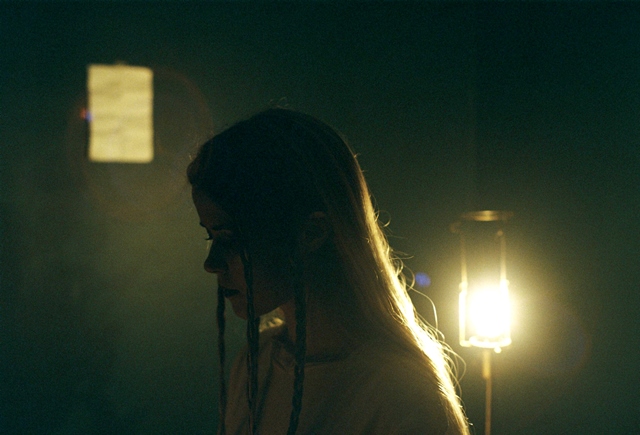 Do you believe in ghosts?
Do you believe in ghosts?
Er… I’ve never seen a ghost. But because I’ve not seen it, it doesn’t necessarily mean it’s not there. I can never exclude the fact there might be ghosts out there, maybe not the way we believe they look. Maybe it’s something truly different. If there are worldly forces or energies… mysterious energies floating around… I think there’s a possibility.
Throughout your albums, there is the idea of sprits and beings which are not human.
I like to play with the idea that there is more to this world than just me and myself, and create a world around imagination and fantasy, to make myself less important. It’s like watching an ocean or the horizon when you become very small and become absorbed in this beautiful landscape. Digging into the spiritual and ghost stories works in similar way, it makes me forget about space and time, it’s eternal and mysterious. I like to hold on to these unknown things. It’s a safety point, they make me feel harmony; in harmony with my surroundings. You create your own world, it’s a physical place.
What would you like to say about Dead Magic?
Only that magic can never be dead.
Share this article
The future of Arts Journalism
You can stop theartsdesk.com closing!
We urgently need financing to survive. Our fundraising drive has thus far raised £49,000 but we need to reach £100,000 or we will be forced to close. Please contribute here: https://gofund.me/c3f6033d
And if you can forward this information to anyone who might assist, we’d be grateful.

Subscribe to theartsdesk.com
Thank you for continuing to read our work on theartsdesk.com. For unlimited access to every article in its entirety, including our archive of more than 15,000 pieces, we're asking for £5 per month or £40 per year. We feel it's a very good deal, and hope you do too.
To take a subscription now simply click here.
And if you're looking for that extra gift for a friend or family member, why not treat them to a theartsdesk.com gift subscription?
more New music
 theartsdesk Q&A: Soft Cell
Upon the untimely passing of Dave Ball we revisit our September 2018 Soft Cell interview
theartsdesk Q&A: Soft Cell
Upon the untimely passing of Dave Ball we revisit our September 2018 Soft Cell interview
 Demi Lovato's ninth album, 'It's Not That Deep', goes for a frolic on the dancefloor
US pop icon's latest is full of unpretentious pop-club bangers
Demi Lovato's ninth album, 'It's Not That Deep', goes for a frolic on the dancefloor
US pop icon's latest is full of unpretentious pop-club bangers
 Yazmin Lacey confirms her place in a vital soul movement with 'Teal Dreams'
Intimacy and rich poetry on UK soul star's second LP
Yazmin Lacey confirms her place in a vital soul movement with 'Teal Dreams'
Intimacy and rich poetry on UK soul star's second LP
 Solar Eyes, Hare & Hounds, Birmingham review - local lads lay down some new tunes for a home crowd
Psychedelic indie dance music marinated in swirling dry ice
Solar Eyes, Hare & Hounds, Birmingham review - local lads lay down some new tunes for a home crowd
Psychedelic indie dance music marinated in swirling dry ice
 The Lemonheads' 'Love Chant' is a fine return to form
Evan Dando finally gets back in the saddle with an album of new tunes
The Lemonheads' 'Love Chant' is a fine return to form
Evan Dando finally gets back in the saddle with an album of new tunes
 Music Reissues Weekly: Evie Sands - I Can’t Let Go
Diligent, treasure-packed tribute to one of Sixties’ America’s great vocal stylists
Music Reissues Weekly: Evie Sands - I Can’t Let Go
Diligent, treasure-packed tribute to one of Sixties’ America’s great vocal stylists
 'Deadbeat': Tame Impala's downbeat rave-inspired latest
Fifth album from Australian project grooves but falls flat
'Deadbeat': Tame Impala's downbeat rave-inspired latest
Fifth album from Australian project grooves but falls flat
 Heartbreak and soaring beauty on Chrissie Hynde & Pals' Duets Special
The great Pretender at her most romantic and on the form of her life
Heartbreak and soaring beauty on Chrissie Hynde & Pals' Duets Special
The great Pretender at her most romantic and on the form of her life
 The Last Dinner Party's 'From the Pyre' is as enjoyable as it is over-the-top
Musically sophisticated five-piece ramp up the excesses but remain contagiously pop
The Last Dinner Party's 'From the Pyre' is as enjoyable as it is over-the-top
Musically sophisticated five-piece ramp up the excesses but remain contagiously pop
 Moroccan Gnawa comes to Manhattan with 'Saha Gnawa'
Trance and tradition meet Afrofuturism in Manhattan
Moroccan Gnawa comes to Manhattan with 'Saha Gnawa'
Trance and tradition meet Afrofuturism in Manhattan
 Soulwax’s 'All Systems Are Lying' lays down some tasty yet gritty electro-pop
Belgian dancefloor veterans return to the fray with a dark, pop-orientated sound
Soulwax’s 'All Systems Are Lying' lays down some tasty yet gritty electro-pop
Belgian dancefloor veterans return to the fray with a dark, pop-orientated sound
 Music Reissues Weekly: Marc and the Mambas - Three Black Nights Of Little Black Bites
When Marc Almond took time out from Soft Cell
Music Reissues Weekly: Marc and the Mambas - Three Black Nights Of Little Black Bites
When Marc Almond took time out from Soft Cell

Add comment